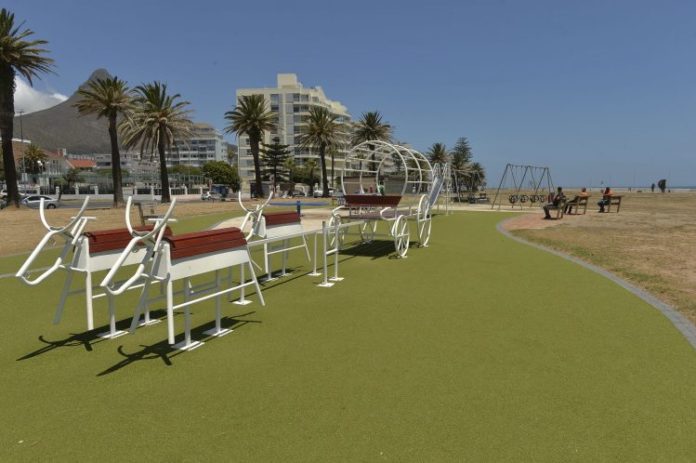
The Sea Point promenade, one of Cape Town’s most scenic walkways and recreational spaces situated between the Sea Point Pavillion Swimming Pool and Granger Bay, has undergone major repairs over the past five years.
The Promenade, an extremely popular public space which can be described as the heart of the Atlantic Seaboard, is the most frequented public space by people from around Cape Town and beyond for different purposes. It is a place where people meet, interact and socialise.
The City’s Transport Department completed Phase 2 of this long-term project in December 2018.
The second phase included the section between the Mouille Point lighthouse and the natural beach at Granger Bay, as well as Rocklands Bay and the section of sea wall opposite the Hall Road/Beach Road intersection.
The work entailed the rehabilitation of the sea wall at Rocklands Bay and Mouille Point and the adjacent section of the promenade.
Due to the deterioration of the sea wall over time, the City commenced with a major sea wall and promenade rehabilitation project in 2012.
The purpose is to strengthen and upgrade the sea wall in order to extend its longevity as well as to protect this popular public space.
Given the scale of the project, the rehabilitation of the sea wall and the promenade is being undertaken in phases.
The first phase of the refurbishment of the sea wall and the promenade between Three Anchor Bay and the Mouille Point lighthouse was completed in 2015.
‘It needs to be appreciated that this project is not just a simple paving project. It is a major civil engineering undertaking, the primary objective of which is to rehabilitate and strengthen the sea wall which has had to withstand the onslaught of the sea for well over 80 years in places,’ said the City’s Mayoral Committee Member for Transport, Alderman Felicity Purchase.
The work has involved excavating down behind the wall and strengthening the wall with reinforced concrete from behind, as well as recladding the front face of the wall with precast concrete panels. New coping panels and railings are then installed, and finally the promenade area behind is repaved.
The construction progress was very much dependant on favourable weather and tidal conditions, as work could not take place when the sea was pounding up against the wall.
The protective natural stone facing used along these sections of the sea wall has deteriorated over time, exposing the core of the wall to heavy ocean swells.
The rehabilitation works will add at least another 50 years to the wall’s lifespan.
Furthermore, we got rid of the patchwork of emergency repairs that were carried out over the years to improve the overall aesthetics of the space.
Apart from being aesthetically pleasing, the concrete pavers used for the Promenade are specifically designed and manufactured to withstand the extreme exposure conditions to which this space is exposed.
‘We also installed new precast concrete bollards with stainless steel railings, stone-clad seating walls and timber benches that require very little maintenance.
‘A new feature on the Promenade is the new seating walls, which provide the public with a place to rest and enjoy the view, while preserving the original stone facing recovered from the wall as well as preventing the wash of sea water from flooding the area behind the seating walls,’ said Alderman Purchase.
The high-strength precast cladding panels were designed with a simulated stone finish (using some of the original facing blocks for the mould) in order to maintain the original look of the wall.
‘Independently of the sea wall project, we upgraded the play parks along the Sea Point Promenade. The ‘new’ parks have seating areas where parents can enjoy the space while watching their children play – a move that ensures that visitors and residents alike benefit from the optimal use of this resource,’ said Alderman Purchase.

